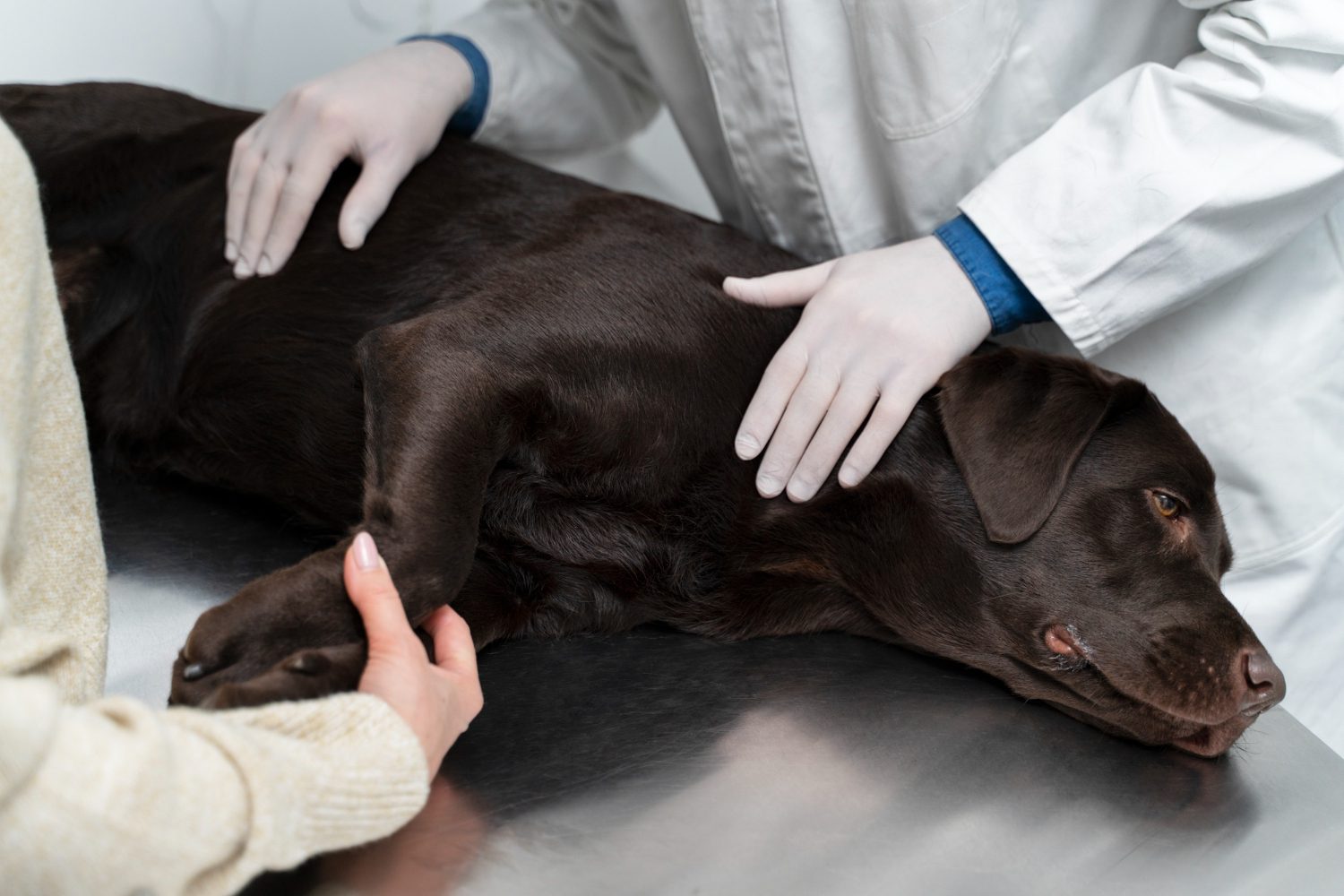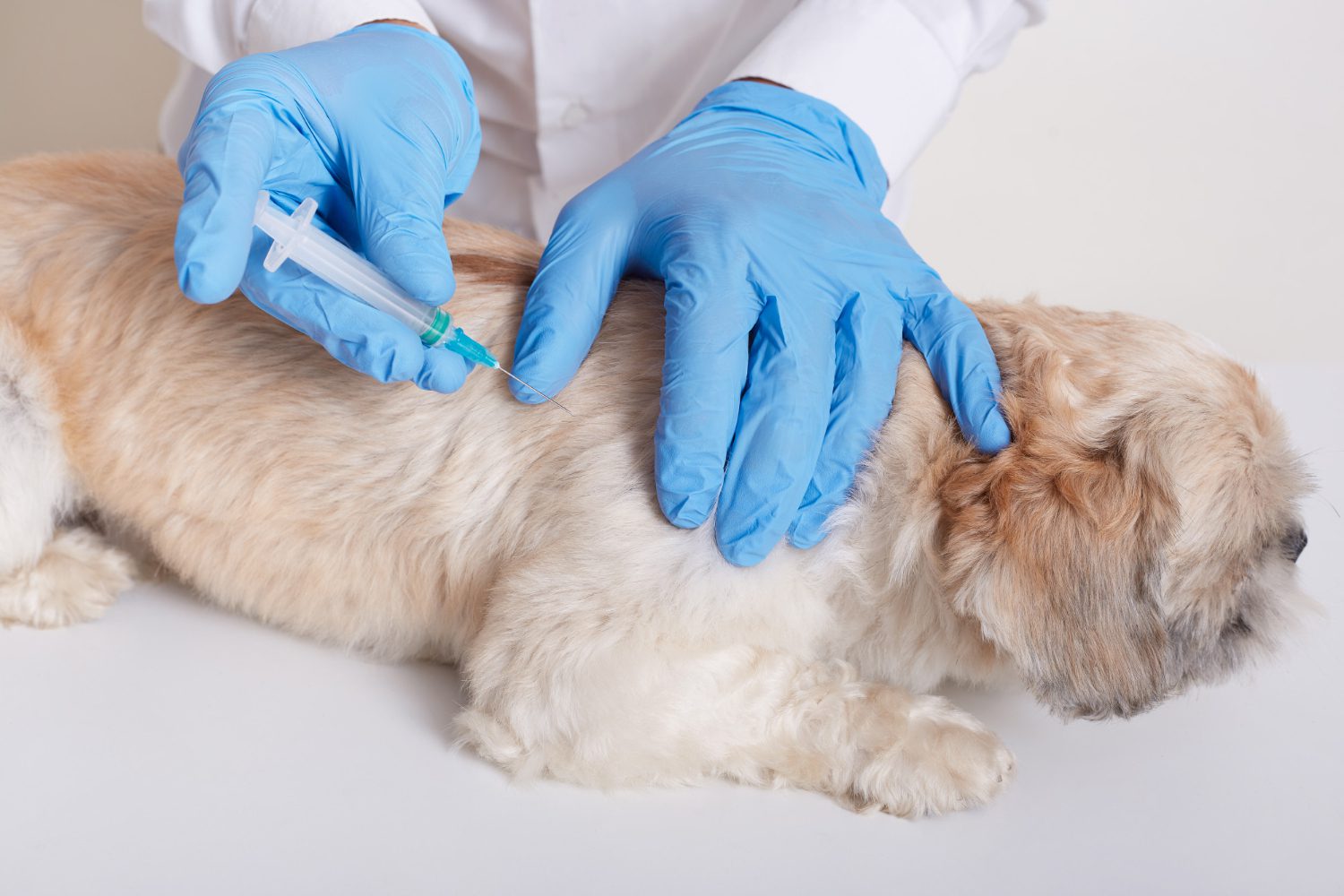Addison's in Dogs: What You Need to Know

By Evelyn Harcourt
août 07, 2025 - 1 min read
In the veterinary community, this hormonal disorder is known as ‘The Great Pretender’. This is because the signs are vague and tend to wax and wane. It is notoriously difficult to identify, and it can take a while to reach a diagnosis.
This article explores canine Addison’s disease, how it is diagnosed, and the best treatment strategies available at the moment. Although it is not a condition that can be cured, with lifelong medicine and monitoring, there is a good prognosis.

What is Hypoadrenocorticism (Addison’s Disease)?
Addison’s disease is a condition in which dogs do not produce enough aldosterone or cortisol in their adrenal glands, affecting various functions such as the stress response and metabolism.
Role of the Adrenal Glands
Adrenal glands are located on top of the kidneys; one on each side. They can be visually examined using diagnostic imaging, including an ultrasound or MRI scan.
Adrenal glands influence a surprising number of things. This includes blood pressure, heart rate, and the body’s response to stress. They produce mineralocorticoids and glucocorticoids, which quickly travel all over the body in the bloodstream.
Primary vs Secondary Addison’s Disease
Typically, it is the primary form of Addison’s disease that dogs develop. The adrenal glands are destroyed, usually due to autoimmune disease, and no longer produce the cortisol and aldosterone the dog requires to function normally.
Secondary Addison’s is rare and is caused by pituitary gland dysfunction. Signs can be less severe and are more related to low cortisol. A pituitary tumour or excessive, long-term steroid use can cause it.
Causes and Risk Factors of Addison's in Dogs
This disease has several potential triggers, and identifying the cause helps guide the most effective therapy.
Autoimmune Adrenal Destruction
The body’s immune system attacks and destroys the adrenal glands. The inflammation is triggered because the body mistakenly believes there is an ‘intruder’ that it needs to defend against, causing severe damage.
Medication-Induced and Latrogenic Causes
For some dogs, hypoadrenocorticism is caused by medical intervention. The most common situation is a dog that has been on steroids (such as those with atopic dermatitis) for a long time, and is suddenly stopped.
Breed Predispositions and Age/Gender Trends
Typically, young and middle-aged females are affected. Pedigrees including the Standard Poodle, Great Dane, and Westie are overrepresented.
Stress Triggers for Crisis Episodes
Stress can trigger an Addisonian crisis in those affected. The dog’s system becomes overwhelmed and unequipped to effectively alter blood pressure and salt balance. Any illness, injury, or change in routine, such as physical or emotional stress, can be a potential trigger.
If a dog is highly strung or prone to anxiety, owners are encouraged to tackle this head-on to reduce their chronic stress levels. It can be useful to have a canine behaviourist on your side to offer a more tailored plan.

Signs and Symptoms of Addison's
There are no specific signs for this condition, and it mimics many other diseases.
Early, Vague Clinical Signs
Some of the earliest signs of Addison’s in dogs can include mild stomach upset, constipation, lethargy, low body temperature, a decreased appetite, and a change in thirst levels.
Symptoms can come and go, making the diagnosis that much trickier to reach.
Addisonian Crisis: Emergency Indicators
For many dogs, it is not until an Addisonian crisis that a diagnosis is sought. These dogs become suddenly and critically unwell, with signs including bloody or black diarrhoea, severe weakness and collapse. Affected dogs need immediate emergency vet care.
Diagnosis for Addisons
Addison’s is notoriously tricky to diagnose and often goes under the radar for some time, as it can be confused for pancreatitis, gastroenteritis or even a toxicity.
Physical Examination and History
Your vet is going to check your dog from nose to tail, checking for changes such as a slow or irregular heartbeat, a low temperature, or dark stool in the anus.
Your vet is also going to talk to you to gather any pertinent information- such as details on recent symptoms and any medicine your pet has been on.
Blood Work
Blood tests can reveal a great deal of information and your vet is going to pay particular interest to any changes in the sodium, potassium or chloride levels.
Other changes they will be on the lookout for include high urea, low glucose, and mild anaemia.
ACTH Stimulation Test
If Addison’s is suspected, your vet is then likely to order an ACTH stimulation test. This is the gold standard test for reaching a diagnosis.
The dog’s cortisol level is monitored via a blood test, ACTH is injected, and then the cortisol level is checked again in an hour, to assess for effect.
Additional Imaging
Imaging is generally not necessary to reach a diagnosis, but it can help rule out a number of other conditions if the diagnosis is in question. If the dog does have Addison’s, the adrenal glands are often found to be much thinner than normal.

Treatment Options for Addisons
Once a diagnosis is reached, your vet will focus on implementing an effective treatment plan for the future.
Acute Crisis Stabilisation
If your dog is critically unwell, the aim is to stabilise it. It will be kept in the veterinary clinic, and a crystalloid intravenous solution in boluses and IV dexamethasone will be administered. Their salt levels will be closely monitored until they return to normal.
Depending on their present signs, supportive therapy can also include blood transfusions, antiemetics, gastroprotectants, and pain management.
Long-Term Hormone Replacement Therapy
Patients need ongoing prednisone (steroid) tablets and mineralocorticoids, such as DOCP or Fludrocortisone.
While steroids are given orally daily, the mineralocorticoids are usually given as a monthly injection by your vet.
Monitoring Electrolytes and Medication Adjustments
Dogs need regular check-ups to monitor their symptoms and salt levels and ensure they’re taking the most effective dose of their medicine. Patients may initially be seen monthly, but this can become less frequent.

Living with Addison’s Disease
Dogs with Addison’s disease can live happy, relatively normal lives, and in most cases, the condition isn’t what ultimately affects their lifespan.
Daily Medication Routine and Compliance
Dogs must receive their medicine at the right dose each day. Failure to do so can quickly lead to symptoms developing.
Recognising Stressful Situations
These dogs cannot handle stress like other dogs, so it is up to you as the owner to identify and avoid these situations as much as is reasonable.
This can include a stay in a dog kennel, a thunderstorm, or a long journey.
Regular Veterinary Check-Ups
Your dog will have to be seen regularly, and this is going to need to include blood checks to measure their salt levels and ensure they are coping well.
Your vet may also recommend other regular tests, such as blood pressure measurement and urine analysis.

Prognosis and Quality of Life
As mentioned, the prognosis is good as long as the therapy protocol is followed and regular checkups are performed.
One study revealed that dogs have a median survival rate of 4.7 years past diagnosis. So, although this is a lifelong disease, patients can live a normal life.
Learn More About Addison's in Dogs
We understand that Addison’s is a complicated condition and that you may have questions about whether your dog has this condition or is suspected of having it.
You can contact us to talk things through further at any time.
Addison's in Dogs FAQs
Can Addison’s disease be cured in dogs?
No, there is currently no cure for Addison’s disease but it can be managed to the point that the dog can live a normal, healthy life.
How much does monthly treatment typically cost?
Each month, your dog will need some oral steroids (inexpensive) and an injection of mineralocorticoids, which can cost about £100 or so, depending on your pet’s weight. You’ll also have to factor in the cost of regular check-ups and blood tests, which can add another couple of hundred pounds every few months.
Should my dog with Addison’s get special insurance coverage?
Ideally, you’ll want an insurance policy with lifelong cover and no lifetime limit. Keep in mind that insurers are generally not going to cover pre-existing conditions.
Continue reading

Signs a Cat is in Pain and How to Recognise Them
Learn how to recognise pain in your cat and the subtle signs to look out for.
Read article
What to Do If Your Dog Eats Chocolate?
Learn what to do if your dog eats chocolate and the signs of toxicity to look out for.
Read article
Signs of Hypothermia in a Dog and How to Treat It
Learn the signs of dog hypothermia and how to treat it quickly and safely.
Read article